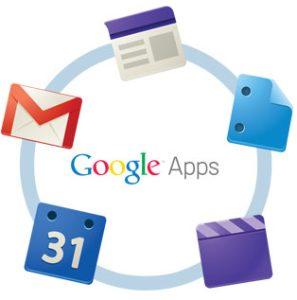Part I – Project Description
My students are instructed to spend their instructional experiences, which I classify as all non-independent academic work time, sitting in their seats silently, with attention squarely on the educator (myself). They do not have any time to “explore” what they are learning, process what is being taught, and gain any sort of understanding from it as the instruction is being delivered.
The goal of my project is to provide my students with an online, collaborative environment for them to interact with the instruction and each other utilizing Google Apps. My students will be able to use the Apps to talk about the lessons being taught, reflect on what they’ve learned collaboratively, and do so in real time that can be supervised and assessed. When my students are assigned group work, they can take the work outside of class and not have to be concerned about the location of their group-members when they decide to work together as a group.
The use of the technology involved in this project also provides input to me in terms of giving me ideas for further instruction as well as evaluative purposes like surveys, quizzes, and student self and peer evaluation.
Part II – Pedagogical Transformation and the Evolution of Student Learning in this Project
Teaching the knowledge isn’t enough. My students must be able to gather understanding from the instruction being given. Online communities, such as those provided by Google Apps, provide an environment to gain that understanding. I believe that every facet of understanding can be approached using online communities depending upon what academic activity is being given to my students. For example, if the assignment is to learn and understand vocabulary on a particular topic, Google Apps can be used to build on the facets of explain (Students use Google Docs to share the definition and example uses for the vocabulary with other students), interpret (students use Google Docs to create sentences or short stories on the meaning of the vocab), apply (Students create a Google Presentation to show how vocab definitions, examples in various formats (pictures, sentences, etc.), and present their findings with their peers), and have perspective (Students use the vocab with the instruction to produce a research project with a group of peers on the topic) easily.
It is my goal that every student that uses the online community I provide will gain the ability to use a variety of the facets of understanding based upon their own learning preferences and the learning scenarios and activities they are being asked to gain understanding on. They will also acquire the ability to collaborate in a more active, fluid learning environment.
Assessing this understanding should be ongoing, qualitative, and filled with useful descriptive feedback. Ongoing assessment would involve the requirement that every student and group project undertaken would be “Shared” with me with me having the ability to provide comments on their work and track editing history. Assessment would also involve the creation of quizzes, surveys, and other traditional styles of assessments using Google Forms. Students can also design surveys to give to their peers for peer evaluation purposes.
